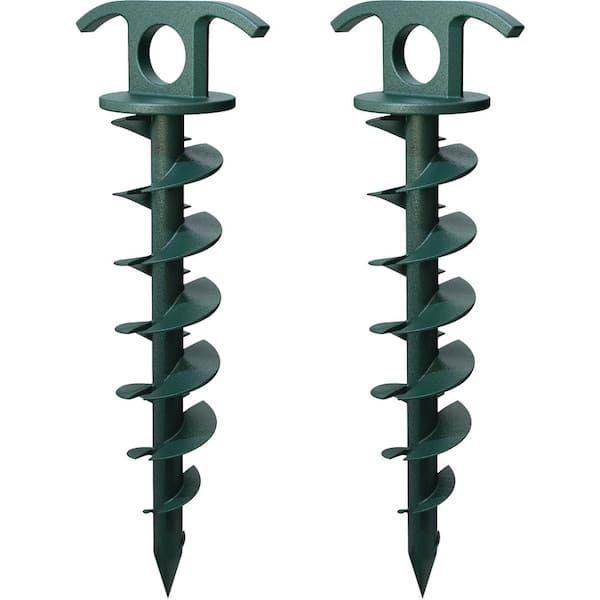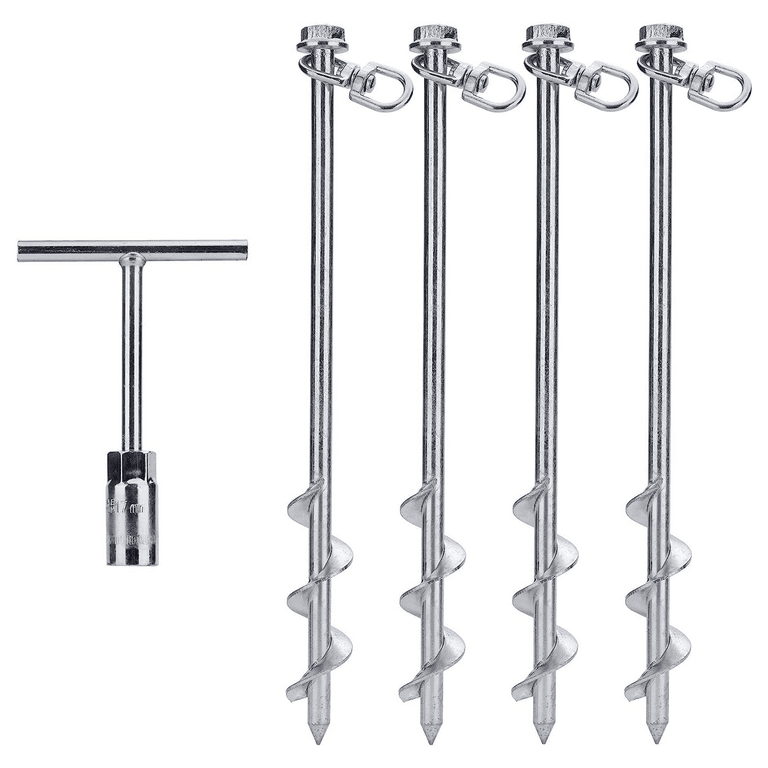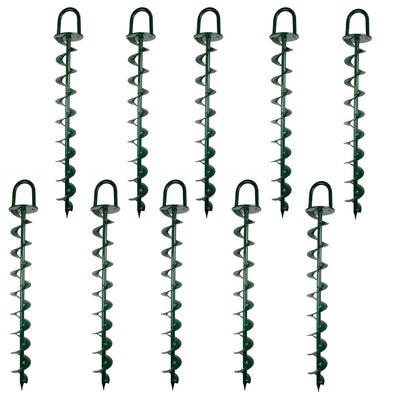Discover the Crucial Uses Ground Support in Construction and Landscaping
Ground supports are important components in both construction and landscape design, offering crucial stability and assistance across different applications. Their role in securing hefty devices and improving soil retention highlights their significance in promoting safety and security and sustainability.
Protecting Fences and Gates
Protecting fences and entrances is a basic element of property delineation and safety in both domestic and industrial settings. Ground anchors play an important function in making sure that these frameworks continue to be steady and effective gradually. By providing a robust anchoring solution, ground anchors aid protect against fencings from leaning or falling down as a result of ecological aspects such as wind, dirt erosion, or ground motion.
In household settings, correctly secured fencings not only boost the visual allure of a property however also offer safety and safety and security for families and pet dogs. In commercial settings, safe and secure fence is essential for protecting properties, defining home limits, and making sure the safety and security of customers and staff members. Ground supports can be installed in various dirt types and conditions, making them functional for various projects.
Moreover, the use of ground supports enables for a more irreversible solution contrasted to conventional approaches, such as concrete grounds, which can be taxing and labor-intensive. Ground Anchor. This effectiveness is specifically useful in landscaping tasks where timelines are crucial. In general, the assimilation of ground supports into fence and entrance installments considerably adds to their durability, capability, and overall performance in protecting residential or commercial properties
Supporting Short-lived Frameworks
While momentary frameworks are commonly created for short-term usage, their security is vital for ensuring safety and functionality during their functional duration. Ground anchors act as an effective remedy for stabilizing these frameworks, which might consist of outdoors tents, phases, or modular buildings. By anchoring these setups safely to the ground, ground anchors aid stand up to wind uplift and side pressures that can jeopardize the honesty of the structure.

Moreover, using ground anchors enables for easy elimination and repositioning of short-lived structures, making them an optimal option for building and construction sites or events that call for flexibility. Generally, ground anchors are an important tool in the effective and secure monitoring of momentary structures, ensuring they perform accurately throughout their planned usage.
Sustaining Preserving Walls
Utilizing ground anchors significantly boosts the architectural integrity of retaining walls, which are vital for handling soil disintegration and preserving landscape stability. Retaining walls go through lateral planet pressures, and without ample support, they can stop working, bring about costly repair services and potential damage to surrounding frameworks. Ground supports give a trusted remedy by moving the tons from the wall right into the underlying soil or rock, making certain the wall surface continues to be upright and protected.
These supports are commonly set up at an established angle and deepness, permitting them to resist the forces exerted by the kept dirt. By making use of high-tensile strength materials and correct installation strategies, ground supports can significantly enhance the wall surface's efficiency under various ecological conditions, including hefty rainfall and seismic activity.
Furthermore, making use of ground anchors additional reading can minimize the requirement for extensive excavation and material use, advertising even more lasting building practices. This strategy not just enhances the resilience of keeping wall surfaces but also lessens the general impact of landscape design jobs. Consequently, integrating ground anchors in maintaining wall surface design is a critical method for both building professionals and landscape designers aiming to ensure long-lasting stability and security.
Anchoring Heavy Devices

Ground anchors offer a trustworthy approach to secure equipment, distributing forces evenly and reinforcing stability. Using supports allows operators to function confidently, specifically when raising or moving hefty lots. Furthermore, in circumstances where machinery should be positioned on soft or unsteady dirt, ground anchors can be installed to boost hold and stop devices from sinking or ending up being immobilized.
Carrying out a methodical approach to securing heavy equipment not just enhances operational efficiency yet also maintains safety standards on website. Routine examinations and maintenance of securing systems are vital to guarantee their continued performance. By prioritizing the anchoring of hefty equipment, construction and landscape design specialists can develop safer work environments, inevitably causing even more effective task outcomes.
Enhancing Dirt Retention

Dirt erosion poses a significant obstacle in both building and landscaping projects, making efficient soil retention strategies necessary. Ground anchors play an important function in enhancing soil retention by providing security to frameworks and greenery, thereby stopping dirt variation created by water runoff and wind.
The setup of ground anchors includes installing steel poles or cables deep right into the dirt, which are then secured to preserving wall surfaces, terracing systems, or greenery. This anchoring mechanism not just stabilizes the dirt yet additionally improves the general integrity of landscape design functions. For circumstances, in sloped areas, ground anchors can be made use of to support you can try these out retaining wall surfaces, effectively lowering the risk of landslides and soil disintegration.
Moreover, these supports assist in the establishment of ingrained plants, which additionally strengthen the dirt structure. By encouraging root development, ground supports contribute to a durable ecosystem that normally holds soil in position, reducing the demand for synthetic barriers or regular upkeep.
Final Thought
Finally, ground anchors serve multiple important features in building and construction and landscaping. Their application in protecting entrances and fencings, stabilizing short-lived frameworks, supporting preserving wall surfaces, securing heavy tools, and enhancing soil retention underscores their importance in promoting security and stability. By facilitating these essential jobs, ground supports add considerably to the total stability of different tasks, making certain durability and sustainability in both industrial and household settings. Their adaptability makes them an essential device in modern-day construction techniques.
By Visit Your URL providing a durable anchoring remedy, ground anchors aid protect against fencings from leaning or breaking down due to ecological elements such as wind, soil disintegration, or ground activity. - Ground Anchor
By anchoring these setups firmly to the ground, ground supports help resist wind uplift and lateral forces that can jeopardize the honesty of the structure.
Using ground supports dramatically improves the architectural integrity of maintaining walls, which are vital for taking care of soil erosion and keeping landscape stability. Ground anchors give a reliable solution by moving the tons from the wall into the underlying dirt or rock, guaranteeing the wall surface stays safe and secure and upright.
